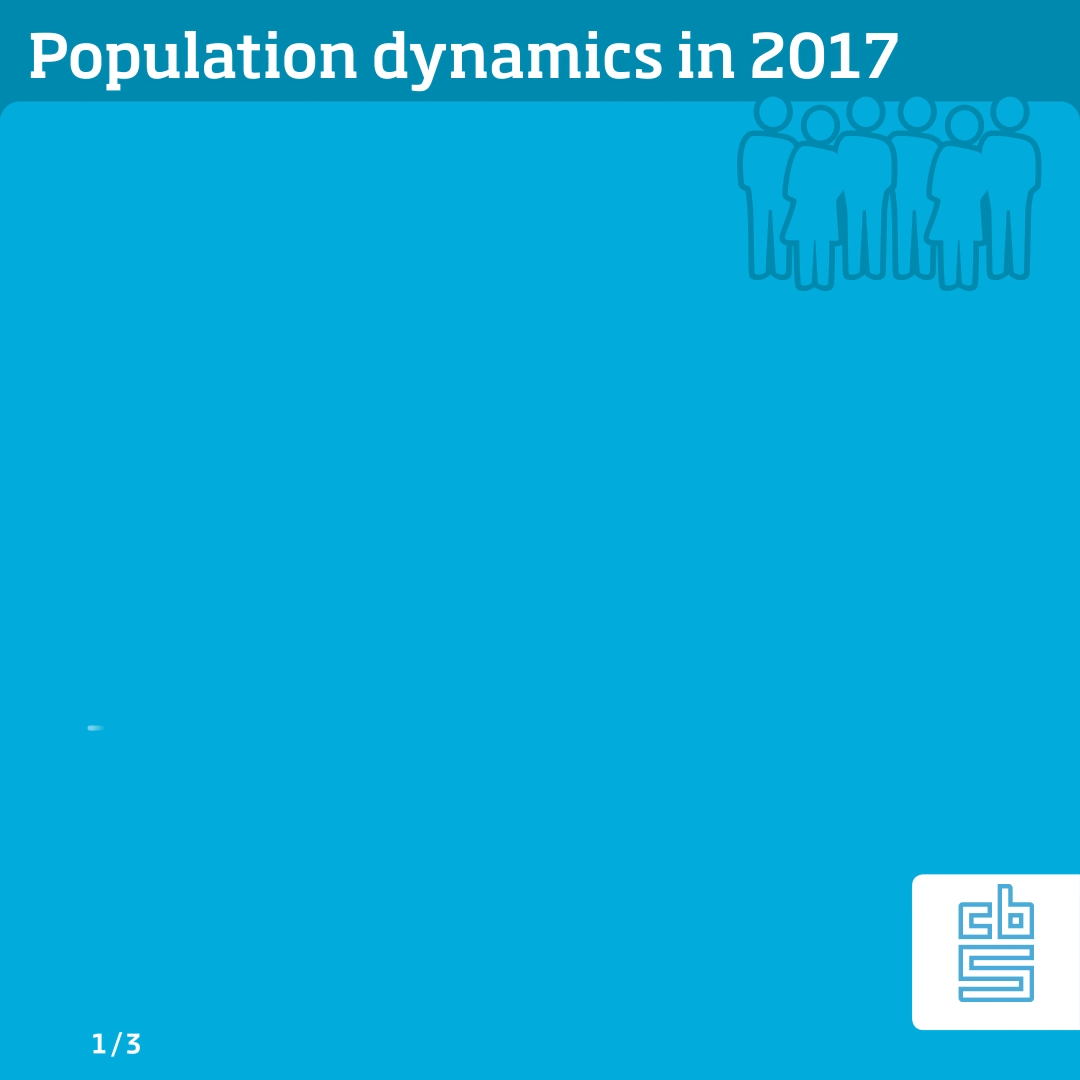Society
Figures - Population

On 1 January 2018, the Netherlands had close to 17.2 million inhabitants. The population grew by 100 thousand in 2017, mainly because more people settled in the country than left. On balance (immigrants minus emigrants), 81 thousand migrants settled in our country. Natural population growth (births minus deaths) added 20 thousand to the population.
There were 170 thousand live births in 2017, almost 3 thousand fewer than in the previous year. At the start of the 21st century, the number of live births exceeded 200 thousand. Many – especially younger – women are postponing motherhood. People in their 20s have had relatively few children in recent years. In 2017, there were 55 births per one thousand women aged between 20 and 29, against 68 in 2010. The birth rate increased slightly among women over 35.
At 46 thousand, the number of deaths was relatively high in Q1 2018. This is 3.2 thousand more than in the same period in 2017, and even represents an increase of 5.5 thousand on 2016. Mortality was higher among the over-80s in particular, but also rose among people in the age group 65 to 79 years.
Every year, mortality is higher in winter than in the other seasons, especially among the over-80s. This is particularly the case during prolonged periods of cold and long-lasting influenza episodes, as was the case in 2018. Furthermore, mortality goes up as the number of elderly people increases.
The main motive for non-native immigrants to settle in the Netherlands is family migration. Out of the 182 thousand non-Dutch immigrants in 2016, over 30 percent joined a family member already living here. In 2013, this applied to almost 40 percent of all non-native immigration. The share of asylum migrants has increased sharply in recent years, from below 5 percent in 2012 to nearly 20 percent in 2016. The majority were people from Syria.
Labour migration is the driving motive for almost 20 percent of non-Dutch immigrants. Their share has hovered around this percentage for a number of years. Education was stated as the main reason by 13 percent. In 2012, this share was still a few percentage points higher.
In 2017, there were 64 thousand new marriages, down by nearly one thousand on the previous year. At the turn of the century, this was close to 90 thousand. On the other hand, the number of partnership registrations increased by 2 thousand in 2017 to a total of 18 thousand. Partnership registration has seen a strong upward trend in recent years. In 2017, slightly more than 1 in 5 unions were partnership registrations, which represents a doubling of the share compared to 2010.
Families often move before the children have reached school age, particularly those living in one of the four major cities. Among families living outside the four major cities who had their first child in 2012, 14 percent moved to another municipality within four years. The share departing from the metropolitan areas was two to three times as high.
Among young families in Amsterdam, 40 percent moved to a different municipality within four years after the birth of their first child, often to somewhere near the city. The share moving away from Utrecht was 34 percent; from Rotterdam, 28 percent and from The Hague, 27 percent.
On 1 January 2017, there were 7.8 private households in the Netherlands. This included 2.6 million (33 percent) households with one or more children. The majority of children live in a household with two parents (2 million), while a minority are part of a single-parent household (0.6 million). There are relatively many households with children in the so-called Bible Belt and in cities with Vinex (new housing) districts. Relatively few households with children are found in university towns as well as in border regions, particularly Zeeland, south Limburg and east Groningen.
The Dutch population is becoming increasingly international: more and more inhabitants have roots abroad, either because they were born there or because their parents came from another country. On 1 January 2017, the Netherlands had 13.2 million native Dutch inhabitants against 3.9 million inhabitants with a migration background. By 2040, there will be an estimated 12.9 million native Dutch inhabitants. The number of inhabitants with a migration background will have gone up to 5.4 million. By 2060, the number of native Dutch inhabitants will have declined to 12.1 million, while the number of inhabitants with a migration background will reach 6.3 million.
